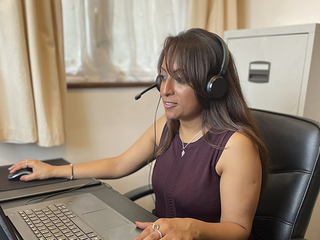Myelodysplastic syndromes (MDS) symptoms
The main symptoms of MDS are caused by low levels of healthy blood cells. Symptoms vary from person to person, depending on which blood cells are affected.
Anaemia
Anaemia happens when you don’t have enough healthy red blood cells in your blood stream. Red blood cells carry oxygen around your body.
The main symptoms of anaemia are:
- Feeling weak and tired (fatigue)
- Feeling breathless, even when you are just doing light exercise
- Feeling dizzy or lightheaded.
Bruising and bleeding
If you have a low number of healthy platelets in your bloodstream, this can make you bruise and bleed easily. You may have nose bleeds or bleeding gums. If you have periods, they may be heavier and last longer than usual.
You may sometimes get a rash on your skin, especially in places where your clothes fit tightly like around your ankles or waist. The rash is made up of tiny spots of bleeding under the skin, called petechiae, which don’t disappear when you apply pressure to the area.
Infections
Having a low number of healthy white blood cells in your blood can make you more likely to get infections. It can also make it harder for your body to fight infections. You might find you get lots of infections, or that infections last for longer than normal.
Worried about symptoms?
Having any of these symptoms does not mean you have MDS or any other type of blood cancer. But if you are experiencing symptoms that are unusual for you, go on for a long time or are worrying you, contact your GP and describe your symptoms as clearly as you can.
Our free pocket guide to blood cancer symptoms can help you record your symptoms for discussion with your GP.
Managing symptoms
If you are having symptoms of MDS, your hospital team should offer you treatment to help control your symptoms. This is called supportive treatment. The supportive treatment you need will depend on the type of MDS you have and what symptoms you are having.
There are also things you can do yourself – in addition to treatment – to help manage some of your symptoms. Click on the headings below to find out more.
There are things you can do to manage fatigue so you can carry on as normally as possible. Take a look at our information on blood cancer and fatigue, including people’s stories about how they cope with fatigue in their daily lives.
Many people with MDS are at higher risk of infection. Some people with MDS have neutropenia. This is a condition where you have a low level of white blood cells called neutrophils in your blood. This weakens your immune system, making it harder to fight infections.
There are things to you can do to reduce your risk of catching infections, including following basic hygiene and getting vaccinations such as the flu and covid jabs. Our information about infection risk and neutropenia explains ways to keep yourself self.
If you have low platelets, you should usually avoid blood thinning medicines and non-steroidal anti-inflammatory drugs (NSAIDs), unless your doctor recommends them. NSAIDs include the painkillers ibuprofen and aspirin.
It’s also best to avoid activities where you have a high risk of injury. These include contact sports, climbing high ladders and cycling without a helmet.

Worried about anything or have questions?
If you need someone to talk to, please don't hesitate to contact our Support Service by phone or email.
When to contact your hospital team about symptoms
If you have a diagnosis of MDS or you’re being tested for it, it is important to be aware of new symptoms and tell your hospital team straight away.
They will tell you whether you need to see them, or if you should see your GP instead.
Because your immune system may not be working well, you should also look out for symptoms of infection. Infections can get worse quickly, so make sure you tell your hospital team if you have any of these symptoms, or just feel generally unwell:
- fever (a temperature of 37.5°C or above)
- low temperature (less than 36°C)
- shivering and sweating
- feeling confused
- sore throat and cough
- rashes and swelling
- frequent watery poos (diarrhoea)
- a burning or stinging sensation when weeing, or trouble weeing at all
- unusual stiffness of the neck
- achy flu-like symptoms
- unusual discharge from your genitals, or soreness and itching in or around them.

Order your free blood cancer symptoms guide
Print or order a free pocket-sized guide to blood cancer symptoms with space to record any symptoms you think you might have.
